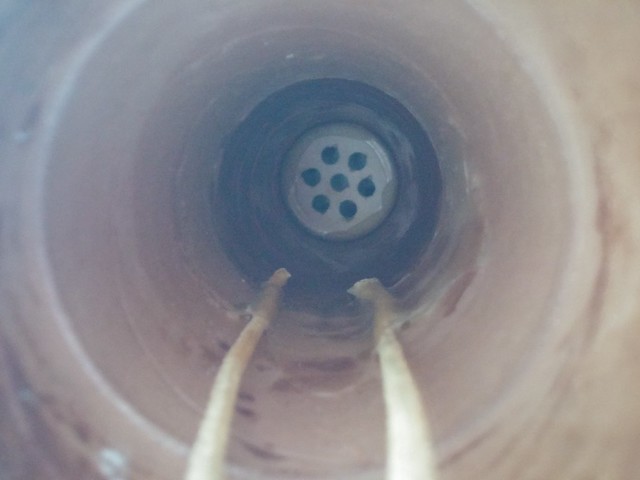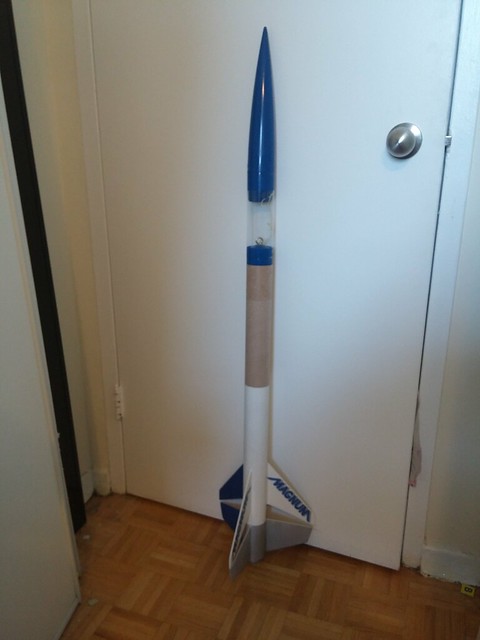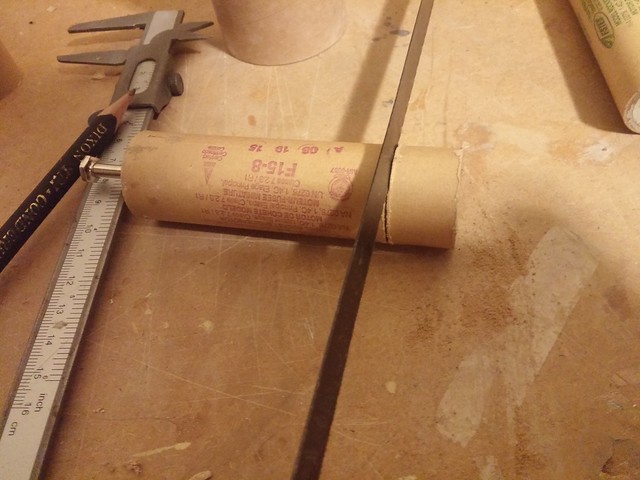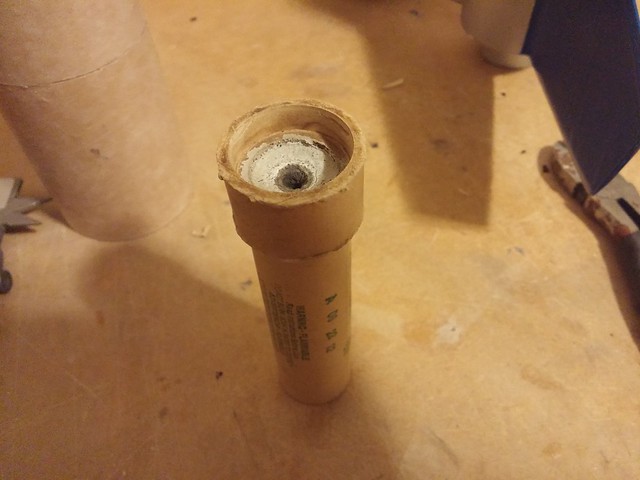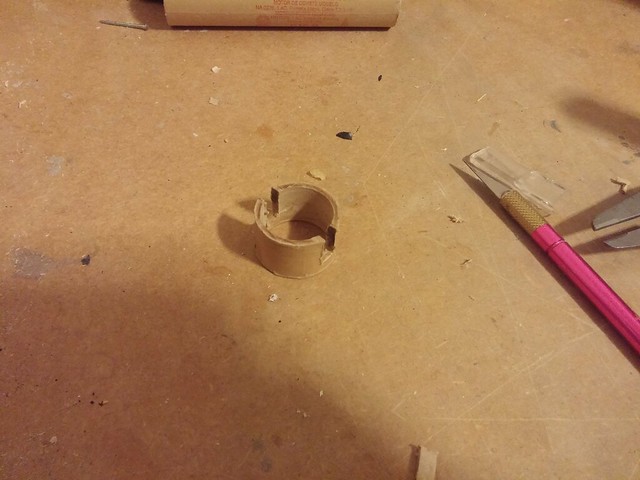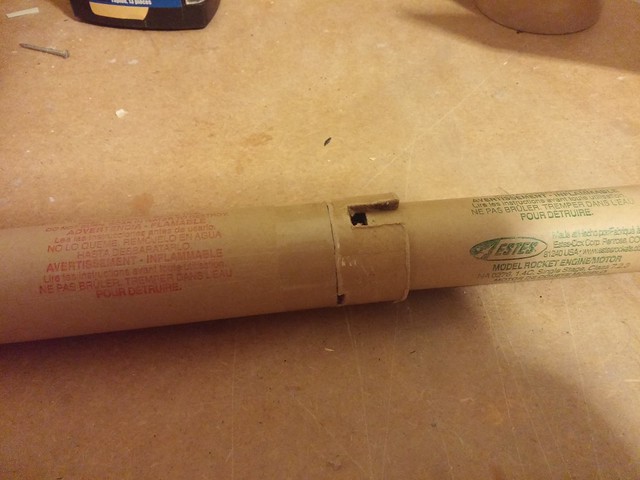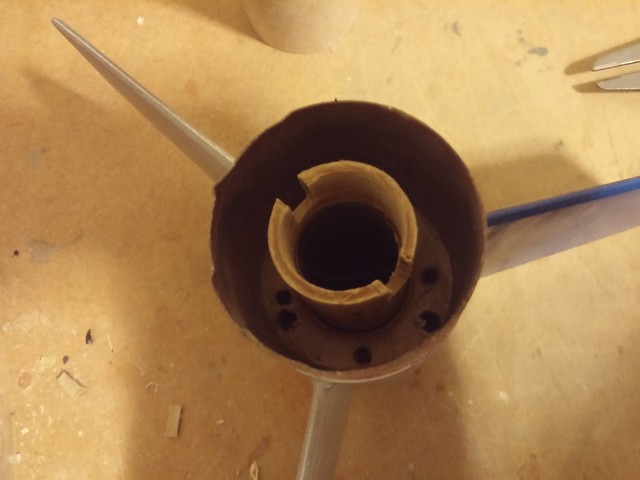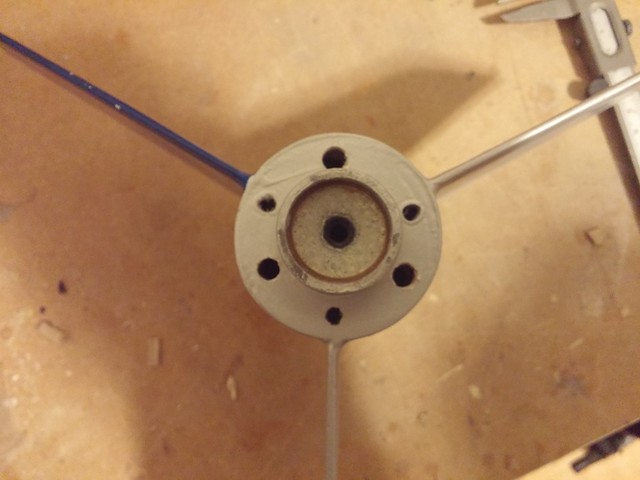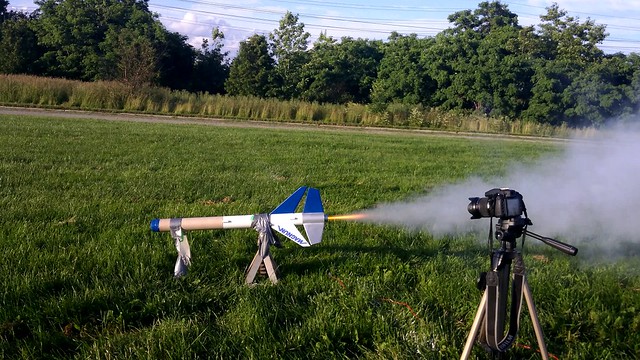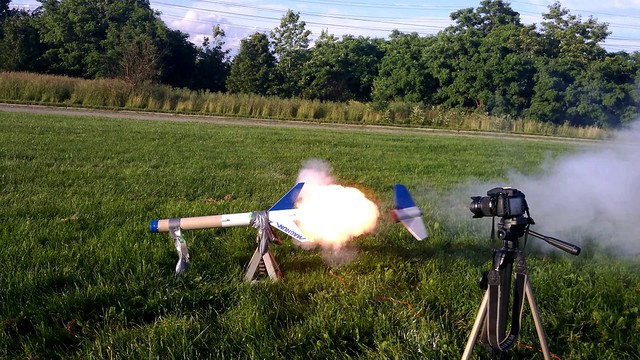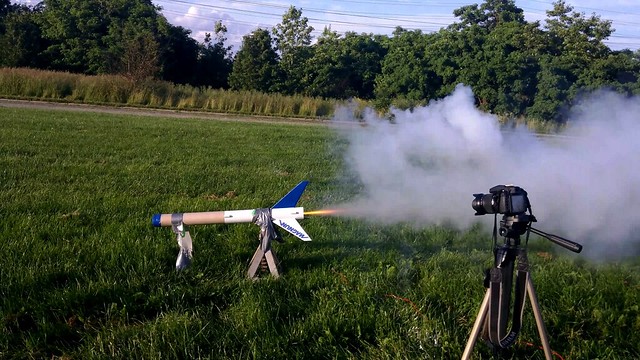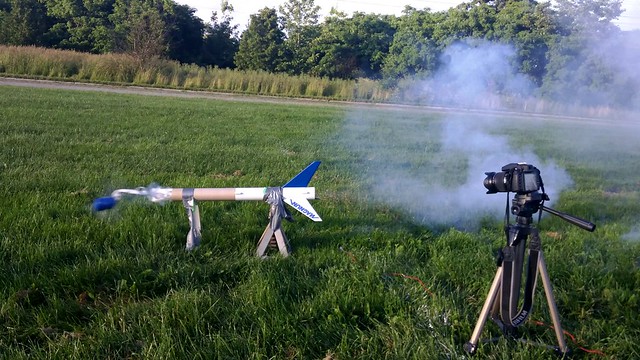Cabernut
Well-Known Member
- Joined
- Oct 15, 2015
- Messages
- 1,384
- Reaction score
- 9
What is it with me and Magnum maiden flights ending in disaster? LOL. I have a video of the flight that I'll be posting soon.
Looks like what probably happened is that the stages separated too easily. There was enough venting between the motors but perhaps not enough venting through the back of the booster. I had drilled a few holes through the centering rings but perhaps they were too small. I noticed before flight that the booster slid on and off very easily so I actually put a couple small pieces of tape on to snug it up a little. Not enough apparently. There are a couple burnt spots on the rear CR of the sustainer and the C11-5 nozzle was a little sooty but not much which told me that the sustainer didn't get hit with much burning BP chunks at all.
Two possible solutions I'm thinking of, perhaps both, are: 1. Need a way of holding them together a bit longer. 2. Vastly increase the venting back through the booster.
Here's the damage:
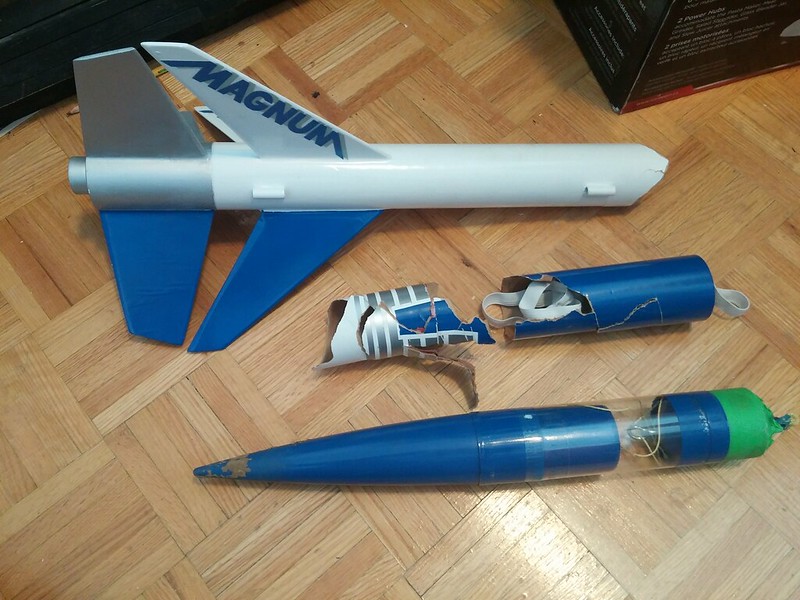
Surprisingly, the top half is relatively fine. The nose cone stuck in the dirt a good 3 inches and wedged into the payload bay 2 inches, nearly crushing my firefly altimeter. This was very hard to pull back out, but I finally got it separated tonight.
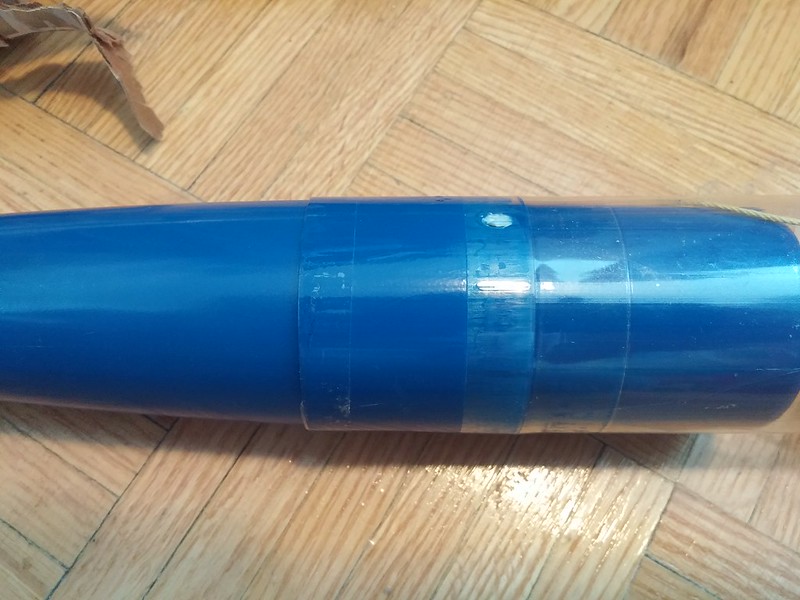
For the rebuild/repair of the body tube, I don't think I have quite enough BT-70 on-hand and no couplers left so I'm going to have to order some new parts. Maybe I'll take the opportunity to install a baffle while I can as well.
Looks like what probably happened is that the stages separated too easily. There was enough venting between the motors but perhaps not enough venting through the back of the booster. I had drilled a few holes through the centering rings but perhaps they were too small. I noticed before flight that the booster slid on and off very easily so I actually put a couple small pieces of tape on to snug it up a little. Not enough apparently. There are a couple burnt spots on the rear CR of the sustainer and the C11-5 nozzle was a little sooty but not much which told me that the sustainer didn't get hit with much burning BP chunks at all.
Two possible solutions I'm thinking of, perhaps both, are: 1. Need a way of holding them together a bit longer. 2. Vastly increase the venting back through the booster.
Here's the damage:

Surprisingly, the top half is relatively fine. The nose cone stuck in the dirt a good 3 inches and wedged into the payload bay 2 inches, nearly crushing my firefly altimeter. This was very hard to pull back out, but I finally got it separated tonight.

For the rebuild/repair of the body tube, I don't think I have quite enough BT-70 on-hand and no couplers left so I'm going to have to order some new parts. Maybe I'll take the opportunity to install a baffle while I can as well.






